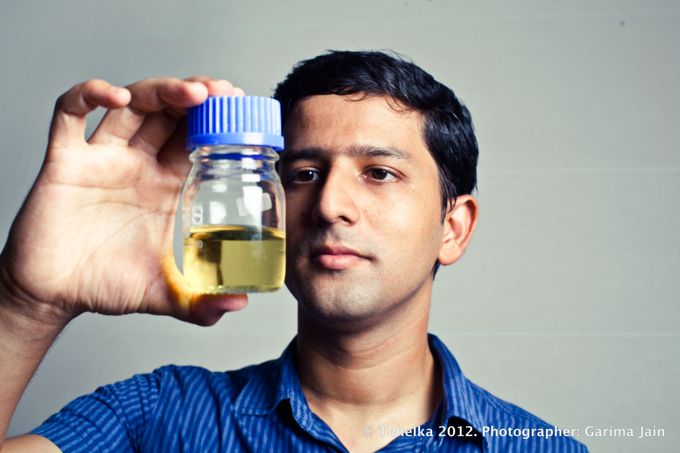Sniffing Out Lung Cancer : Treatment that focusses only on the tumour
The article has been reblogged from Mahindra Rise. If you have a great idea and need a platform to showcase, please submit your idea for Spark The Rise- and get your project funded.
AT THE AGE of 28, when many people are still trying to find themselves, Joshi is trying to find answers to some of the most complex medical challenges of our time. He hasn’t got here by accident; after acquiring a Master’s in Biomedical Engineering, Joshi is pursuing a PhD in the same subject at IIT Bombay. “Conventional chemotherapy is invasive and targets healthy organs too. I wanted to look at treatment that focusses only on the tumour,” he says. Over the past four years, he has moved significantly closer to that goal thanks to his ingenious fusing of nanotechnology and biomedicine.

The Challenge
CANCER TREATMENTS REMAIN draining and invasive, with multiple side-effects; chemotherapy involves non-targeted delivery of drugs — which means these drugs attack ‘normal’ cells alongside cancerous ones, a debilitating fallout that limits the dosage that can be safely administered and causes a host of other health issues, from low immunity to drastic hair fall. Delivered intravenously, the procedure is invasive, painful and prolonged as doctors wait between sessions for the proliferation of enough ‘normal’ cells to subject the body to another round of intensely toxic drugs. Toxicity alone isn’t the challenge either — patients often develop multi-drug resistance, making treatment even more ineffective.
The Idea
BROADLY, TO COMBAT a host of the conventional challenges of chemotherapy by changing the entire method of delivery — imagine a scenario in which chemotherapy is administered externally, through an aerosol, rather than intravenously.
When Joshi first started working on non-invasive delivery of drugs to lung-cancer patients as part of his PhD thesis in 2008, he was hoping to find a way to ensure the drugs could be released in precise patterns with limited impact on ‘normal’ cells; ‘local’ delivery of the drugs also meant more effective treatment.
As research progressed though, Joshi and his adviser Rinti Banerjee took a detour into the challenges of multiple-drug resistance. Fusing nanotechnology and biomedicine, they created a unique ‘vehicle’ of nanostructures that can be used to deliver two drugs simultaneously through a mist inhaled into the lungs; the two drugs (paclitaxel and curcumin) are engineered such that their release is triggered at the cancer site by the unique conditions prevalent there.
Additionally, the nanostructures can penetrate even to deeper regions of tumour tissue — regions that due to lack of oxygen harbour the most aggressive cancer cells and are difficult to reach with current methods of drug administration. All this is made possible through an aerosol, quite like a nebulizer used by asthma patients.

AT THE AGE of 28, when many people are still trying to find themselves, Joshi is trying to find answers to some of the most complex medical challenges of our time. He hasn’t got here by accident; after acquiring a Master’s in Biomedical Engineering, Joshi is pursuing a PhD in the same subject at IIT Bombay.“Conventional chemotherapy is invasive and targets healthy organs too. I wanted to look at treatment that focusses only on the tumour,” he says. Over the past four years, he has moved significantly closer to that goal thanks to his ingenious fusing of nanotechnology and biomedicine.
AS AN AID to simplify lung-cancer treatment, Joshi’s innovation is unparalleled. The aerosol can be produced wherever asthma nebulizers are produced; delivery of the drugs is localised and non-toxic, which results in fewer side-effects and higher efficacy. Above all, the nanostructures reduce the dosage of drugs 10-fold, sometimes even 20-fold, making them more affordable.
It’s not a cure for cancer, but it is certainly a landmark step forward in making cancer treatment less debilitating and more accessible.

PRE-CLINICAL STUDIES on mice have shown promising results in terms of improved survival rates and reduced toxicity. The next step involves clinical tests on humans as per standard guidelines — a long and expensive process that needs funds and partners.“We are in touch with pharma giants but haven’t reached any concrete agreements,” says Joshi. “I’m still doing my PhD, my focus will move to full-time research once I’m done. Certainly, I’ll be looking at similar areas of research, though.”











